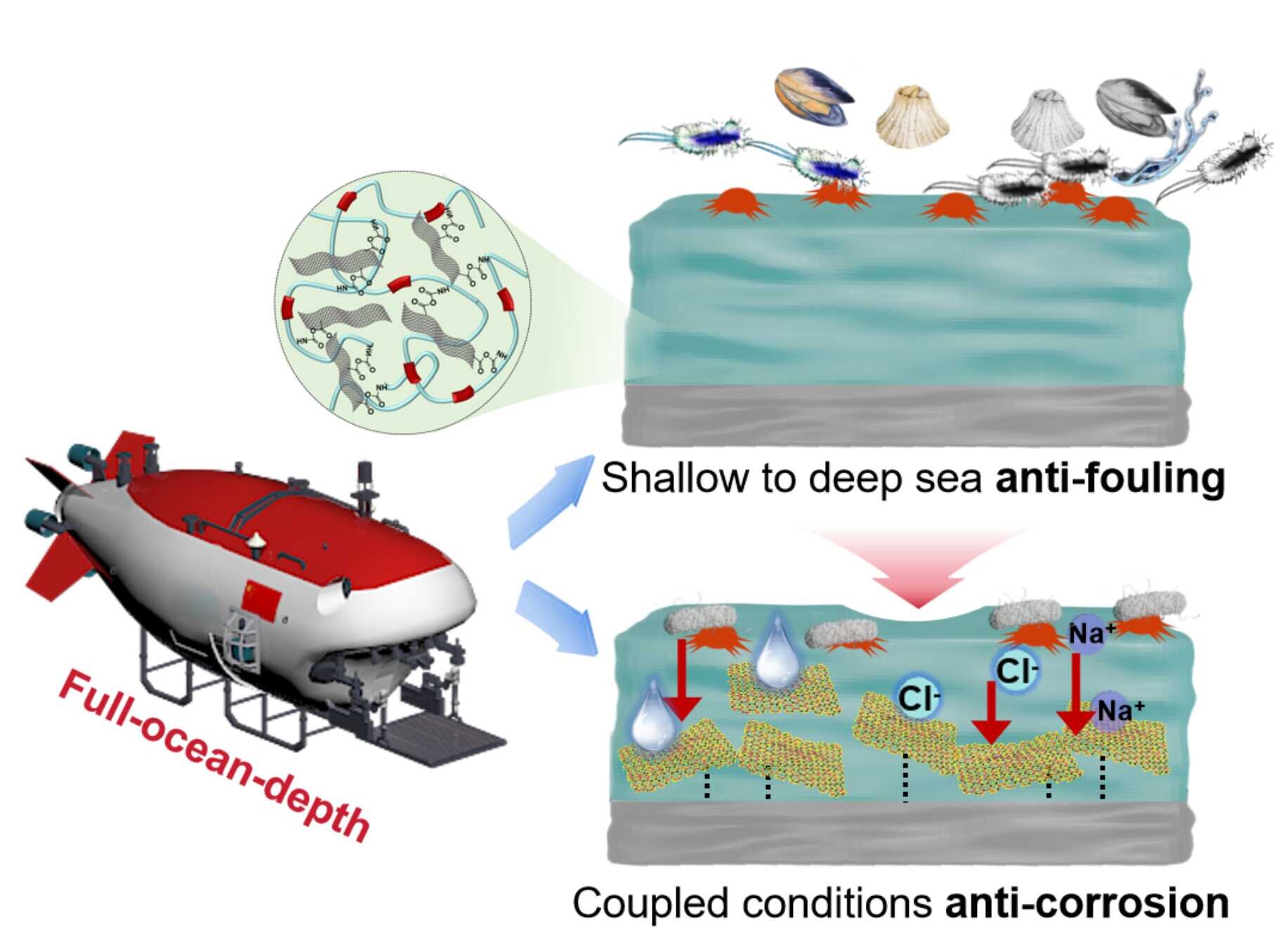
A research team from the Ningbo Institute of Materials Technology and Engineering (NIMTE) of the Chinese Academy of Sciences (CAS), has developed a new integrated poly(oxime-urethane) (PUDF) coating tailored for full-ocean-depth use. The material delivers antifouling and anticorrosion performance for marine engineering applications. The study was recently published in ACS Nano.
The deep sea has emerged as a frontier for marine exploration, but as marine engineering operations expand to full-ocean depths, equipment faces challenges: intense hydrostatic pressure, high salinity, and microbial communities that trigger simultaneous fouling and corrosion—threats that undermine long-term durability.
Conventional multilayer protective systems, however, are vulnerable to interfacial delamination and functional degradation, making them ill-suited for such harsh conditions. This gap has made the development of a single coating that combines synergistic antifouling and anticorrosion protection a critical, long-standing challenge.
To address this, the researchers employed precise molecular design and nanoscale interfacial engineering to create an integrated antifouling and anticorrosion coating based on PUDF. The novel material integrates antibacterial molecules (DFFD) with graphene oxide (GO-COOH) nanosheets, forming a dual-protection system.
The coating exerts its intrinsic antibacterial and antifouling effects by disrupting bacterial purine metabolism and suppressing nucleotide biosynthesis, while the graphene oxide layer provides a physical barrier, blocking corrosive ions and metabolites. This design provides both antifouling and anticorrosion capabilities, even in extreme deep-sea environments.
Experimental results validated the coating’s full-ocean-depth efficacy: Over two months, it prevented the attachment of macrofoulers in the East China Sea (at a depth of 2 meters) and microbial communities in the Philippine Sea (at 7,730 meters). Additionally, the coating withstood prolonged immersion in a simulated environment with high pressure (15 MPa), high salinity, and high bacterial concentration, demonstrating strong anticorrosion performance.
This study provides insights into designing synergistic protection mechanisms for high-performance coatings in extreme environments.
More information:
Peng Zhang et al, Full-Ocean-Depth-Oriented Poly(oxime-urethane) Coating: Construction and Protective Mechanism for Integrated Antifouling and Anticorrosion, ACS Nano (2025). DOI: 10.1021/acsnano.5c09595
Chinese Academy of Sciences
Citation:
Deep-sea coating offers antifouling and anticorrosion protection in extreme environments (2025, October 29)
retrieved 29 October 2025
from https://techxplore.com/news/2025-10-deep-sea-coating-antifouling-anticorrosion.html
This document is subject to copyright. Apart from any fair dealing for the purpose of private study or research, no
part may be reproduced without the written permission. The content is provided for information purposes only.










